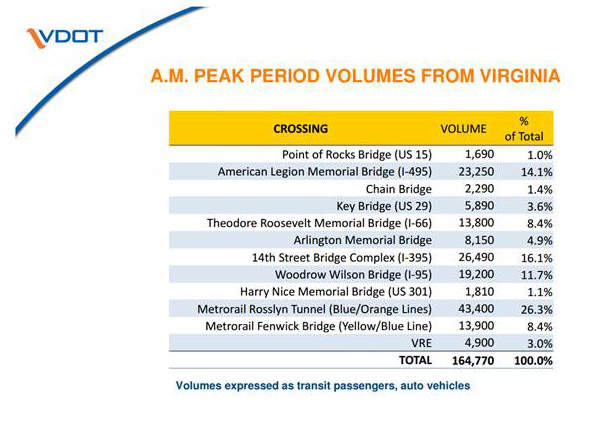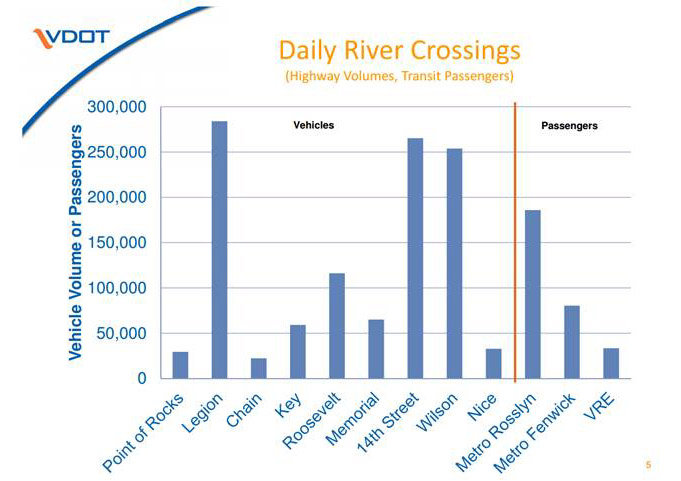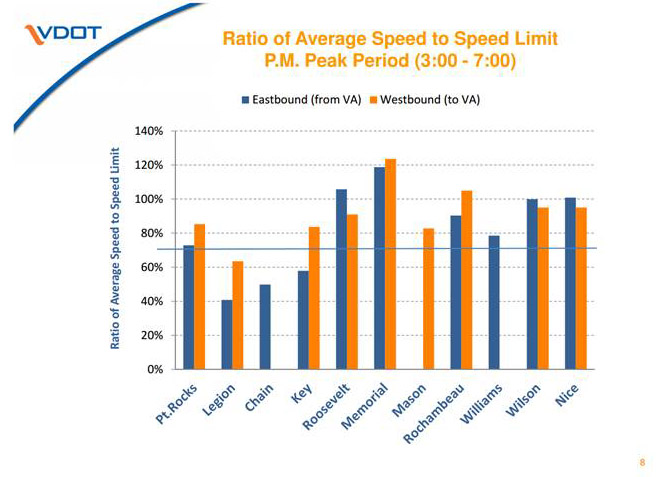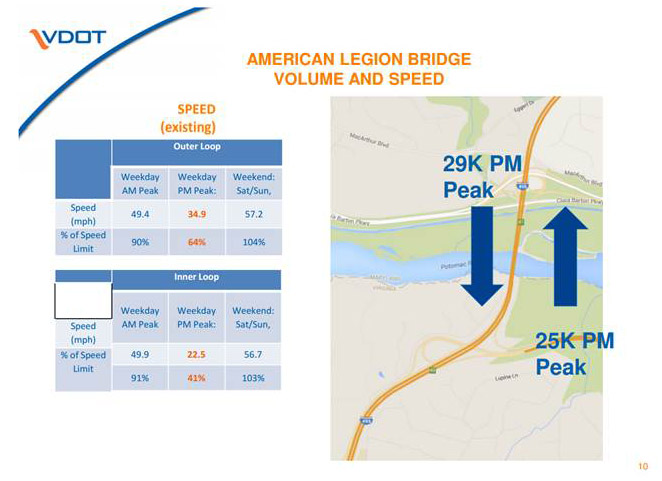WASHINGTON — Virginia transportation officials want to extend the 495 Express Lanes into Maryland to reduce congestion on the American Legion Bridge, a major choke point along the Capital Beltway.
Preliminary materials made available before Wednesday’s Commonwealth Transportation Board meeting show that Virginia Deputy Secretary of Transportation Nick Donohue will recommend pursuing the extension of the tolled lanes across the bridge and all the way to the Interstate 270 Spur in Montgomery County, Maryland.
The Commonwealth Transportation Board, which must approve such projects, is expected to be asked to sign off on an effort by Virginia officials to reach out to their counterparts across the Potomac River to determine whether Maryland would support the project.
Charlie Gischlar, with Maryland’s State Highway Administration, says the agency cannot comment because his agency has not seen any proposals yet. But he says the agency looks forward to hearing from Virginia.
Donohue is expected to emphasize that the high-occupancy/toll lane extension would become Virginia’s top priority to reduce the congestion over the Potomac River.
Virginia still wants to build an additional Potomac River crossing between the Legion Bridge and the Point of Rocks Bridge along U.S. 15, which links Loudoun County, Virginia, and Frederick County, Maryland.
A new bridge has long faced opposition from Maryland.
Separately, the transportation board will get an update on plans to pay for an overhaul along Interstate 66 that is set to include HOT lanes; there is also an opportunity for public comment.
A firm decision on whether the I-66 project will be built and operated as a public-private partnership is expected from a steering committee later this summer.
What’s behind the Express Lane recommendation?
The data used to support the Express Lanes extension into Maryland show that the Legion and Wilson bridges on the Beltway, and the 14th Street Bridge into downtown D.C., carry the most vehicles during the morning rush hour — more than 40,000 total vehicles each.
Out of the 164,770 cars or people counted leaving Virginia during the morning commute, 25.8 percent use one of the Beltway bridges; 34.7 percent use Metro.


The Wilson Bridge, which was expanded to five lanes in each direction in 2012, tends to keep cars moving much faster than the Legion Bridge — especially in the afternoon, when speeds at the Wilson Bridge still average more than 50 mph.
But between 3 and 7 p.m., cars heading from Virginia into Maryland on the Legion Bridge travel only about 22.5 mph; cars heading the other direction travel about 34.9 mph. In the morning, speeds average around 49 mph in each direction. But on the weekends, the average speed is clocked around 57 mph — just over the speed limit.
The Key Bridge and Chain Bridge are the only other Potomac River road crossings that average comparable slowdowns during the afternoon rush.


Data from the morning rush show that more than half of trips heading into Maryland begin in central or western Fairfax County, while more than half of morning-rush trips end in Montgomery County. One in twelve trips or so connect central Fairfax to western Montgomery or Frederick counties or other locations north and west. VDOT predicts that will grow to about one in eight trips over the bridge in the future.







